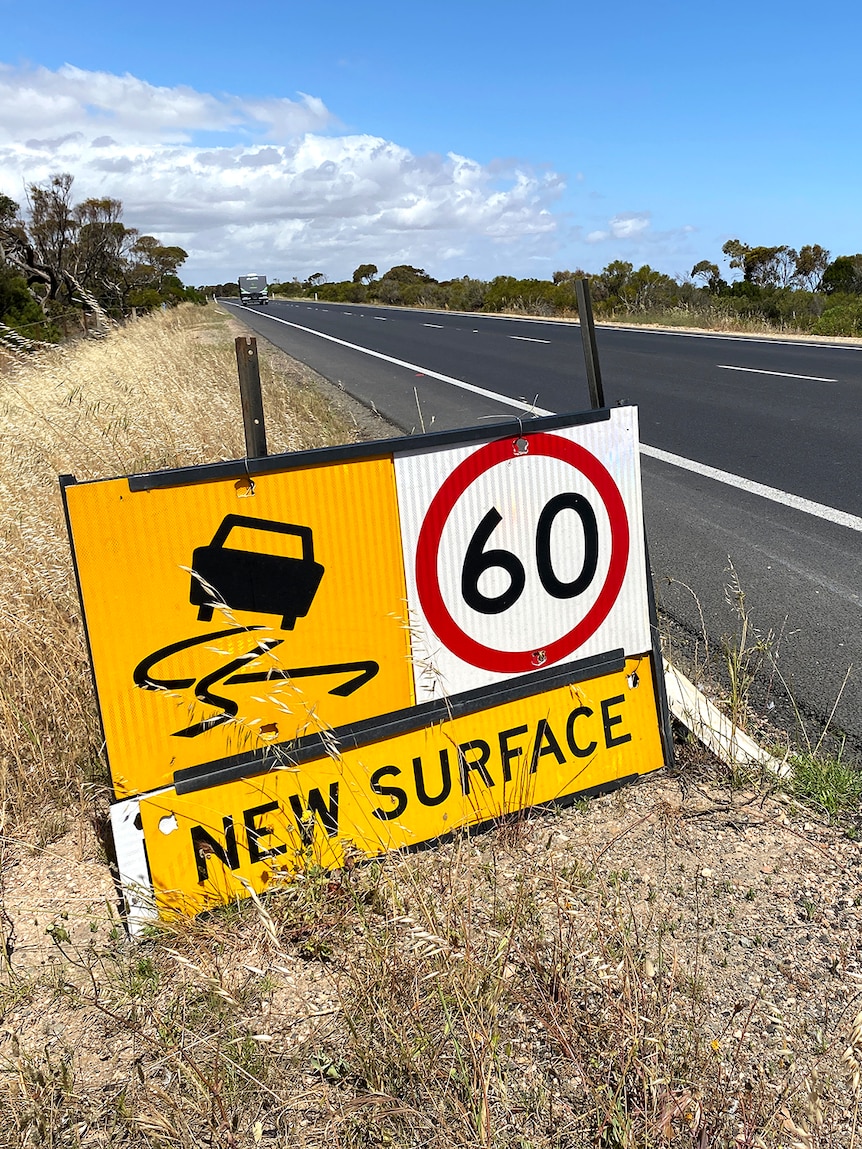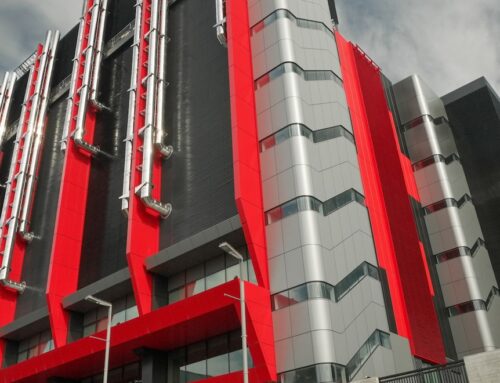The end is in sight for nearly 20 months of roadworks and delays on Port Wakefield Road that have prompted questions about the necessity of ongoing speed restrictions on resurfaced roads.
Key points:
- Speed restrictions between Port Wakefield and Adelaide are due to be lifted in mid-November
- A local MP has been receiving complaints about roadworks signs being left out long after works appear finished
- Some 44 kilometres of asphalt has been resurfaced along more than 10 different sections of Port Wakefield Road
Local MP for Narrunga Fraser Ellis said he had been receiving “extraordinary” levels of complaints since staggered works to resurface more than 10 different sections of the busy highway between Adelaide and Port Wakefield began in April 2020.
“I haven’t heard why this road seems to be taking so much longer than other roads, only that it [the asphalt] needs time to bind, and they’re still working towards that,” Mr Ellis said.
“I did notice on my way down [to Adelaide] this morning that there’s an LED sign that says there are three weeks to go.”
Weather delays
A Department for Infrastructure and Transport spokesperson said the latest 18-kilometre section between Shrike Road and Malakhoff School Road started in May but was put on hold in June 2021 due to “inclement weather and cold temperatures”.
Works recommenced in August and had been completed on October 15 but speed restrictions remained in place “to enable excess bitumen to be worn to a safe level prior to the 110kph speed limit being reinstated, which is expected to take place mid-November”.
Some 44 kilometres of asphalt have been resurfaced so far, at a cost of about $22.2 million, which has been jointly funded by the federal (80 per cent) and state (20 per cent) governments.
On the other side of Port Wakefield, works for a highway overpass are ongoing and not due to be completed until the end of 2022, although it is expected to be open to traffic by Easter.
Loading
Lingering roadwork signs
In parliament during August, Mr Ellis questioned why roadwork signs reducing speed limits were being left on resurfaced sections for months on end to create extended journey times for people who used the highway regularly.
He later introduced a bill that proposed to increase penalties for roadworkers from $1,250 to $20,000 if they left signs out after a project had been completed.
It prompted Luigi Rossi, former DIT general manager and now director of Luigi Rossi & Associates, to say some contractors needed to “lift their game”.
“There’s no question there are situations where the sign that’s been left there is no longer required and there is no reason for it to be there,” he told ABC Radio Adelaide last month.
ABC Radio Adelaide listeners also called in with complaints about ongoing restrictions across the state, from Mount Compass, to Keith, Tailem Bend, Meningie and along the Sturt Highway.
Asphalt curing
The DIT spokesperson said stone mastic asphalt [SMA] with a high bitumen content had been used on Port Wakefield Road by the contractor, the Downer Group, because it provided a durable, rut-resistant surface for heavily used roads.
He said SMA generally exhibited a lower skid resistance after its placement “due to excess bitumen on the aggregate surface”.
“Tests are undertaken to determine when the road surface and reflectivity of new line marking is safe to reinstate the posted speed limit.
“The test results, together with appropriate risk analysis, ensure posted speed limits are reinstated as quickly as reasonably possible, and sometimes incrementally.”
The DIT spokesperson said in some cases “roadworks may appear complete when, in fact, further work may be ongoing”.
He added that the department was also “obliged to ensure a safe environment for all road workers and road users, and the speed limit applies to any hazardous area where roadworks are progressing, whether workers are present or not”.
Posted , updated





